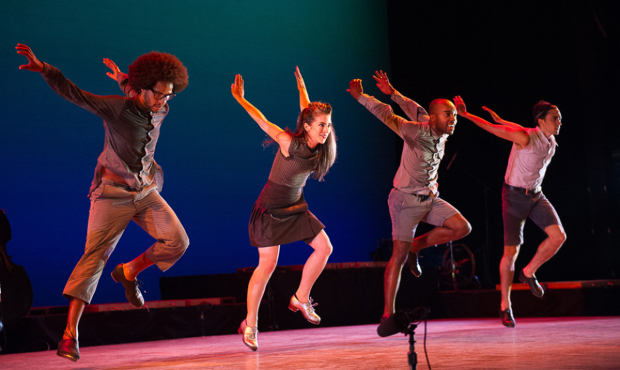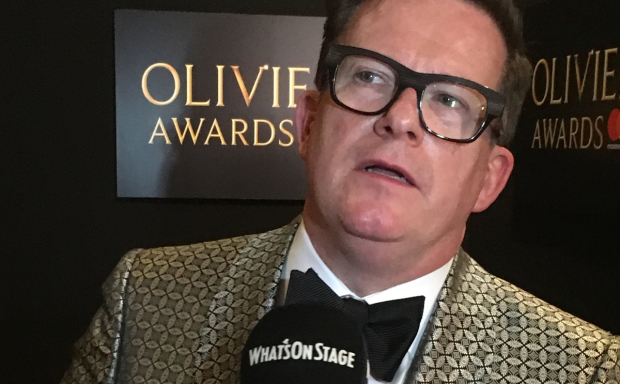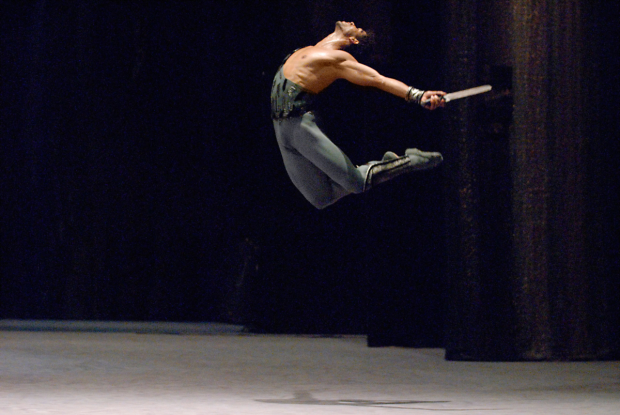Why tap is the future of dance

© Hayim Heron
I’ve seen the future of tap dancing and it looks like Michelle Dorrance. Her Dorrance Dance company is at Sadler’s Wells until Saturday and putting on a sensational show – one that emphasises tap’s possibilities as a creative, artistic form, without ever sacrificing its ability to thrill and excite.
This is all the more inspiring because tap is a difficult form for people like me, who love ballet and contemporary dance. I adore it in the movies, in the feet of Fred Astaire or Gregory Hines, but can quite often be bored by it on stage – even in a musical as brilliantly drilled and performed as 42nd Street, for example. All those long lines of noisy dancers flashing their feet in perfect union. For me, it’s impressive but somehow unsatisfying.
We respect tap dance as an art form, not just as entertainment
When I met Dorrance, who is 37, before she brought her company to London for the first time, I was quickly struck by how different her view of tap is.Watch her online and you see how delicate her style of dancing can be, how subtle and strange the movement that releases the feet and makes the sound that is the heart of tap.
"Tap dance is music," she told me. "The music is not a by-product of the dance, it is the dance. As dancers, we are equally responsible for both. Our relationship to the history of tap comes not only through the steps but through the music and the tonality. We respect tap dance as a musical form, as a historical form and as an art form, not just as entertainment."
Her show – ETM – Double Down – is radical and thrilling. Devised with Nicholas Van Young – "a bit of a mad scientist" as well as an outstanding dancer himself – it makes explicit the idea of tap as a musical force by setting the dancers on electronic pads which create the music they move to, and which they overlay with the intricacy of their tapping. Looping by a small group of musicians adds to the effect of a score being written in real time.
But within that framework it’s dazzling how Dorrance and her dancers – all exceptional – turn tap into such a theatrical form. They create a rhythm with their feet, but also duets and groups where they entwine emotion, relationships and weaving, supple movements into the ongoing percussive beat.
And the sound is so varied. Sometimes you get the metallic twang of the performers going full out and with reckless power; but often you are hearing and seeing swoops and scrapes, little whispers of noise as they push the side of their feet in a circle or build a mesh of clicking pulses. In one wonderful section, they use metal graters and chains alongside the electronic keys to build a rich tapestry of sound. In another, they stand in a line like the keys of a human piano, clapping and tapping, as well as playing the pads with pin perfect precision.
Tap has been more consistently inventive than either hip-hop or contemporary
It is a wondrous thing, containing much for all tastes. I loved the pared back quality of the first half of the show and felt the energy flagged when a melodious singer was added to the mix; I noticed that the woman sitting next to me had exactly the reverse reaction.
What I love most of all is the way that Dorrance, the holder of a deserved MacArthur Genius Award, is both looking forward to the future of tap and back to its past. While she was training, she met many of the purveyors of classic tap, legendary performers such as Fayard and Harold Nicholas, Clayton ‘Peg Leg’ Bates, Bunny Briggs, Buster Brown, Cholly Atkins, mixed with modern masters such as Hines, Savion Glover and Dianne Walker.
She takes the lessons she learnt literally, at their feet, and their passion for tap itself, and uses them to move forward for a new generation. "I’ve been raised in the idea that tap dance is an art form and one that has been more consistently inventive than either hip-hop or contemporary dance but people just don’t know it," she told me. "As far as I’m concerned, my generation of tap dancers are interested in exploring the whole of human existence in our work."
ETM – Double Down certainly makes you feel she can do exactly that. It is thought-provoking and blissful at the same moment. Catch it if you can.
ETM – Double Down runs at Sadler's Wells until 15 July.












